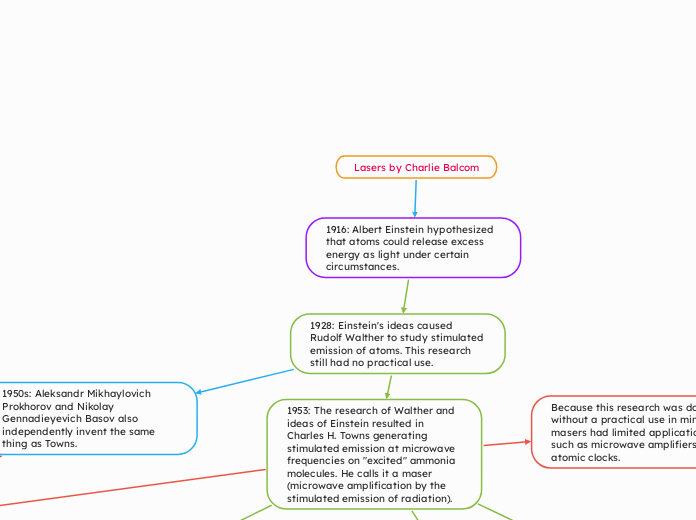Lasers by Charlie Balcom
1916: Albert Einstein hypothesized that atoms could release excess energy as light under certain circumstances.
1928: Einstein's ideas caused Rudolf Walther to study stimulated emission of atoms. This research still had no practical use.
1953: The research of Walther and ideas of Einstein resulted in Charles H. Towns generating stimulated emission at microwave frequencies on "excited" ammonia molecules. He calls it a maser (microwave amplification by the stimulated emission of radiation).
Because this research was done without a practical use in mind, masers had limited application such as microwave amplifiers and atomic clocks.
Dec 1958: Towns and his brother-in-law Arthur L. Schawlow publish ideas for an "optical maser" with shorter wavelengths of infrared or visible light.
Late 1950s: Gordon Gould invents his own laser ideas and coins the word laser.
Gould speculates that lasers will become powerful enough to cut and drill through materials
May 1960: Inspired by the research of Towns, Theodore H. Maiman fires pulses from a photographer's flash lamp exciting chromium in synthetic ruby producing red pulses.
Lasers become popular because they are similar to the "heat rays" of science fiction
1950s: Aleksandr Mikhaylovich Prokhorov and Nikolay Gennadieyevich Basov also independently invent the same thing as Towns.
1964: All three scientists win Nobel Prizes for Physics
